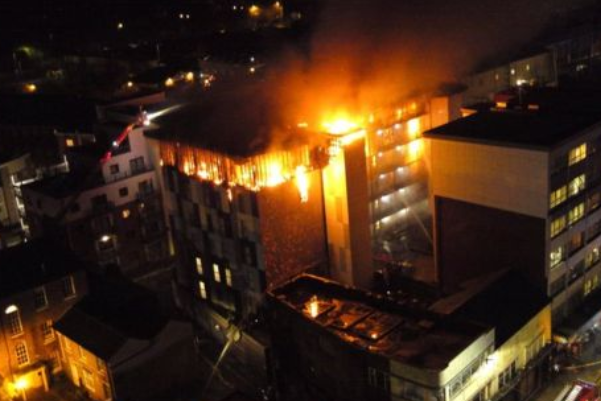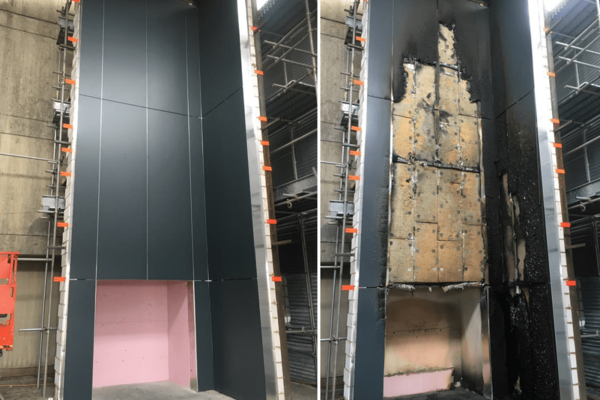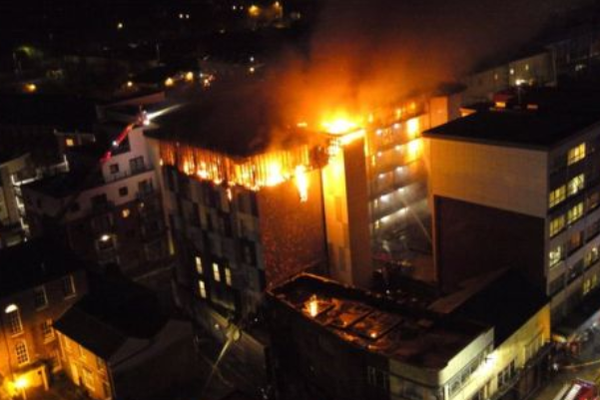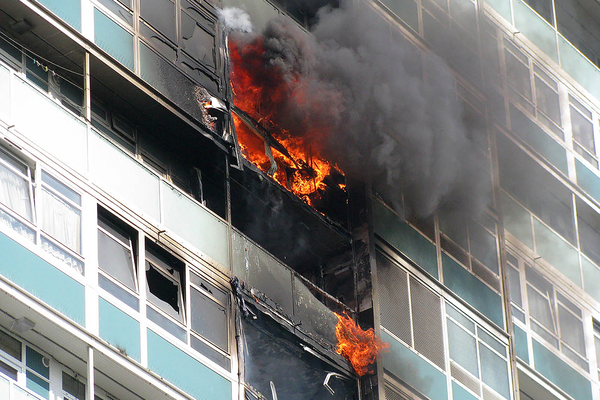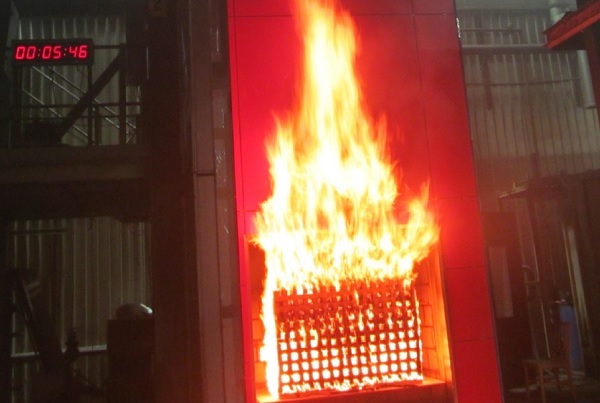Bolton student accommodation involved in fire clad with HPL, planning documents say
The student property in Bolton hit by a devastating fire on Friday night was clad with high-pressure laminate (HPL) panels, according to planning documents.
Students were evacuated from The Cube in Bolton after flames ripped through the upper floors of the building, apparently spreading via the external wall.
The fire brigade later confirmed that the material was not aluminium composite material (ACM) cladding, as used on Grenfell.
Planning documents indicate that Trespa Meteon, a brand of HPL, was used on the building – although it is possible that the material was substituted during construction. News outlets including the BBC have reported that the building was clad with HPL over the weekend.
Because of the building’s height, around 200 firefighters tackled the blaze, with 40 fire engines, three aerial platforms and other specialist appliances in use.
As student accommodation, the block was fitted with fire alarms and an evacuation plan was in place.
All 220 of the building’s occupants have now been accounted for.
The fire brigade confirmed that the fire occurred in ‘phase two’ of the accommodation, which is below 18m, meaning it is outside the scope of the current ban on combustibles.
What is HPL and what has the government said about it?
Above: HPL cladding with combustible insulation during a fire test (picture: BRE)
- High-pressure laminate (HPL) is a cladding material made of wood-based layers impregnated with resin and pressed together under high temperatures.
- If treated with fire retardants, it can obtain a fire safety rating of Class 0 or Euroclass B. However, cheaper versions graded a much lower ‘Class D’ account for more than 80% of the market, according to industry sources.
- HPL window panels were involved in the spread of flame at Lakanal House – where six people died in a fire in 2009. An inquest found these panels to be the less fire-resistant version.
- Pre-Grenfell government guidance permitted the use of the more fire-resistant HPL products on high rises in certain combinations above 18m and all versions were permitted on buildings below 18m.
- After Grenfell, there were calls for its use to be banned – with experts warning that the “next Grenfell” would occur in an HPL-clad building.
- The government was made aware that the product, combined with combustible insulation, had failed a privately commissioned safety test in November 2018. However, it did not run its own testing until July – and selected non-combustible insulation and the more fire-resistant HPL, sparking criticism that it was seeking to limit the scope of the cladding crisis by finding a combination that would pass.
- After this combination narrowly passed this test, the government said it could stay on high-rise buildings if combined with mineral wool insulation. It said that combinations with combustible insulation should be removed, but refused to provide funding – citing the test pass to say it was not as combustible as ACM.
- Following the fire in Bolton in November 2019, a government spokesperson said that all systems, including HPL, should be removed if they “do not conform to our strict building safety standards”.
However, a spokesperson for the Ministry for Housing Communities and Local Government told The Guardian: “Building owners must ensure their tenants can live safely in their homes and this means all cladding systems, including HPL, that do not conform to our strict building safety standards must be removed.”
However, this does not acknowledge the fact that the building in question is below 18m and is therefore outside the scope of the ban on combustibles.
It also contrasts with a statement in the summer that said HPL “could be safe” for a high-rise building if used with mineral wool insulation. The government has been asked to clarify the position.
Before Grenfell, HPL could have been used on high rises via a number of different routes in the official guidance – including justification through a desktop study, which MHCLG has previously described as a “well established and often necessary” part of the building regulation system.
It could also have been used if treated with fire retardant to reach the standard of ‘Class 0’ for external spread of flame.
Reacting to the fire, Matt Wrack, general secretary of the Fire Brigades Union, said: “My congratulations go to the crews on the ground who did amazing work in incredibly difficult circumstances. This terrible fire highlights the complete failure of the UK’s fire safety system.
“It’s deeply troubling to see fire spread rapidly up a building’s exterior again – a shocking indictment of the government’s shameful inaction after Grenfell. This is not how any building should react to a fire in the 21st century, let alone a building in which people live.”
